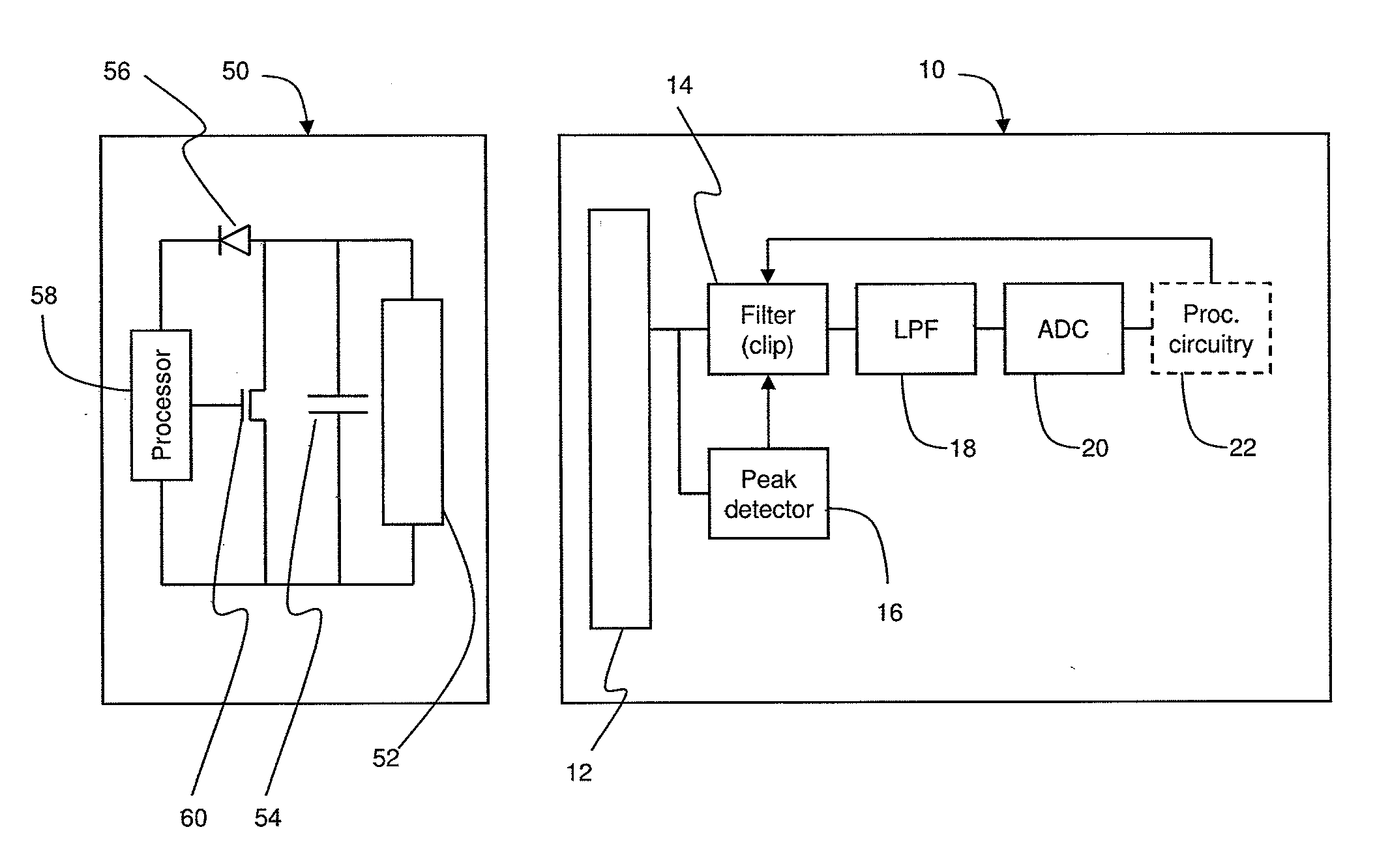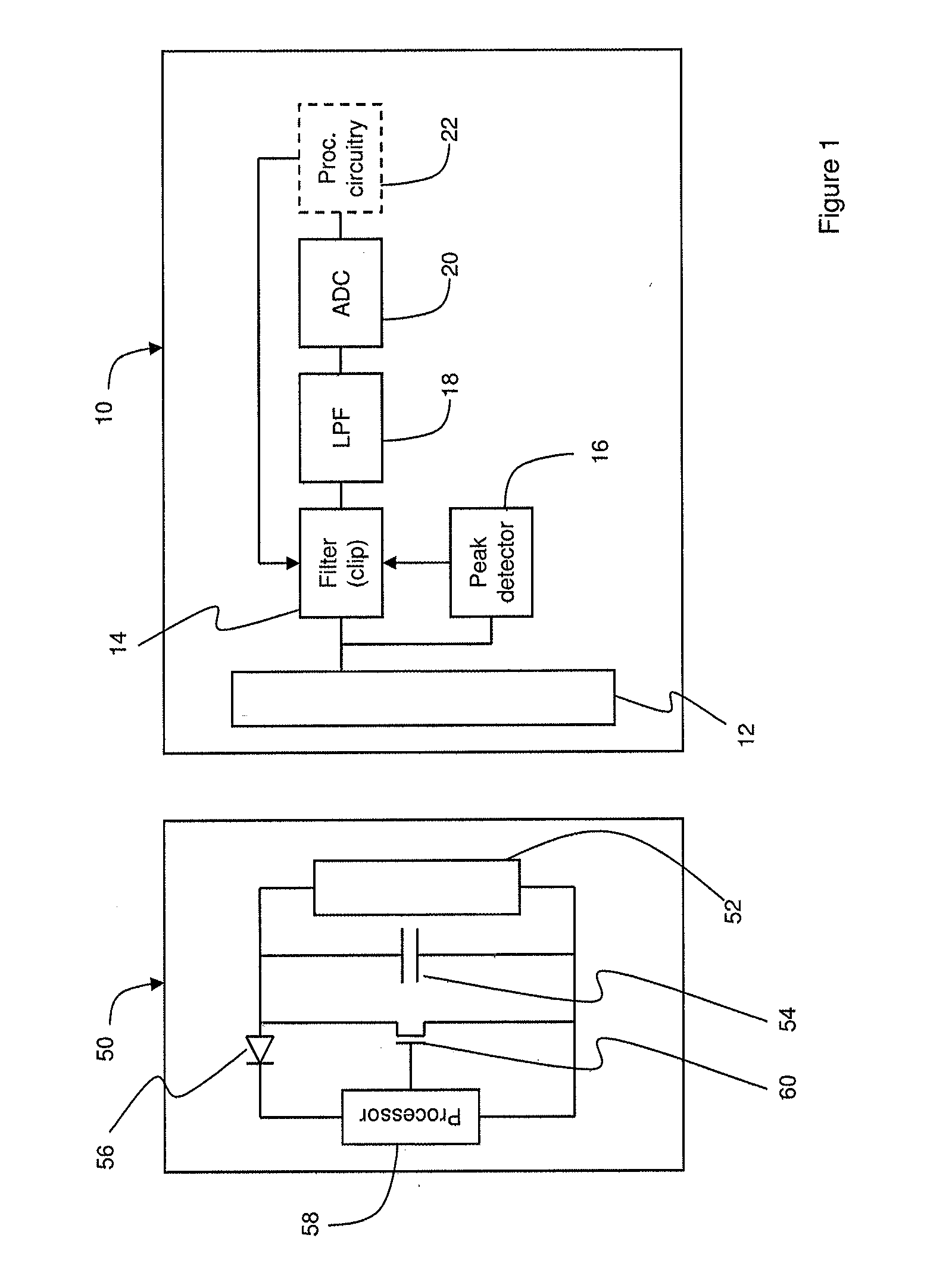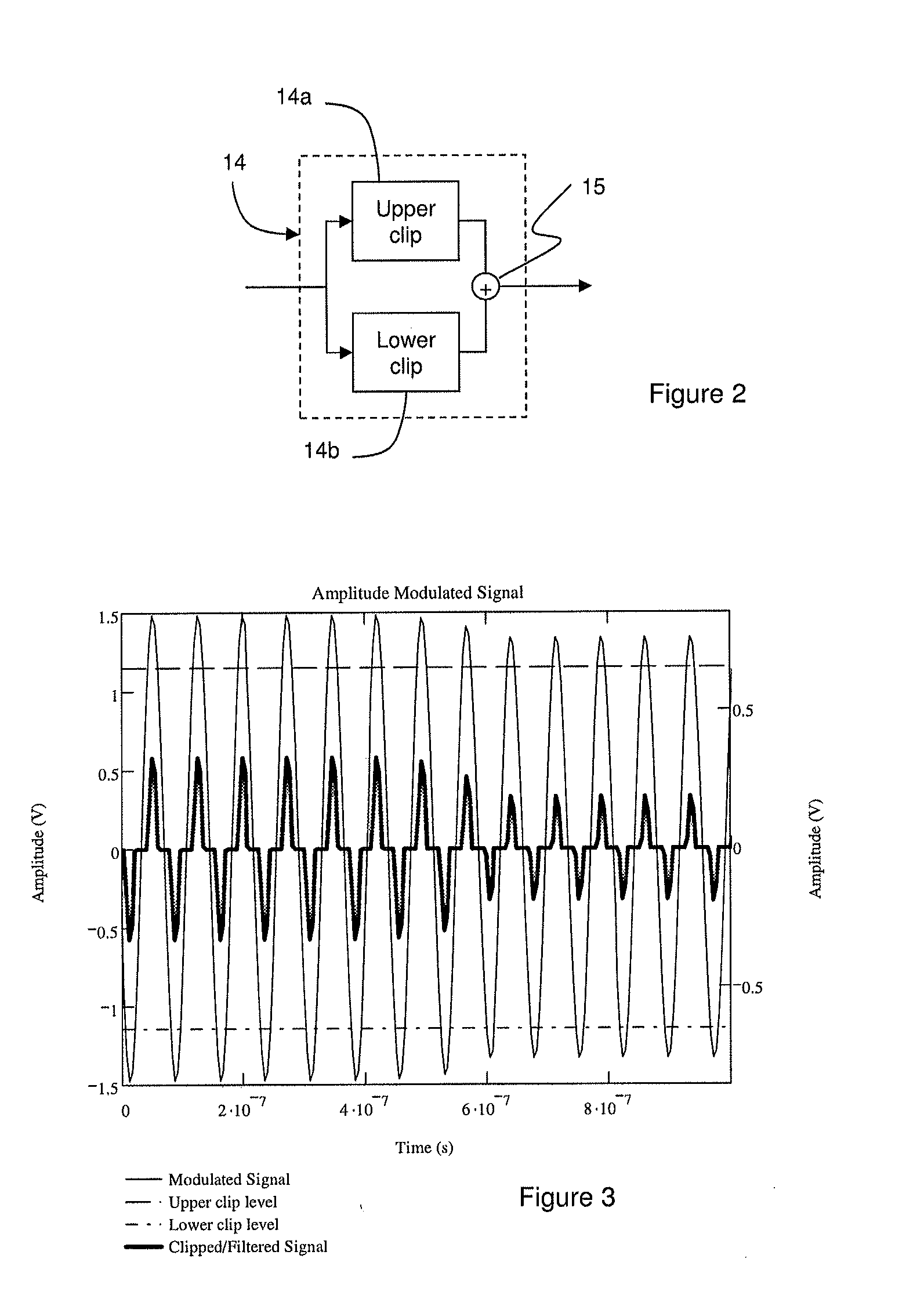Receiver for a telecommunications system
a technology for telecommunications systems and receivers, applied in the field of telecommunications, can solve problems such as inability to use techniques, complex adc requirements with a large number of bits,
- Summary
- Abstract
- Description
- Claims
- Application Information
AI Technical Summary
Benefits of technology
Problems solved by technology
Method used
Image
Examples
Embodiment Construction
[0013]FIG. 1 is a schematic diagram of a Reader 10 and a Tag 50 according to embodiments of the present invention.
[0014]The Reader 10 comprises an antenna 12 with which signals can be transmitted and received, coupled to a receive Rx chain for processing signals received in the antenna 12. Those skilled in the art will appreciate that the antenna 12 will also be coupled to a transmit Tx chain in order to modulate the antenna signal to transmit data; however, this is not relevant to a description of the present invention and is therefore not illustrated for clarity. The first element in the Rx chain is an amplitude limiter 14 which applies upper and lower clipping levels to the signal in the antenna in a manner which will be described in further detail below. A peak detector 16 (also known as an envelope detector) is also coupled to the antenna 12, and sets the upper and lower clipping levels used in the amplitude limiter 14.
[0015]The clipping process may, in general, introduce high-...
PUM
 Login to View More
Login to View More Abstract
Description
Claims
Application Information
 Login to View More
Login to View More - R&D
- Intellectual Property
- Life Sciences
- Materials
- Tech Scout
- Unparalleled Data Quality
- Higher Quality Content
- 60% Fewer Hallucinations
Browse by: Latest US Patents, China's latest patents, Technical Efficacy Thesaurus, Application Domain, Technology Topic, Popular Technical Reports.
© 2025 PatSnap. All rights reserved.Legal|Privacy policy|Modern Slavery Act Transparency Statement|Sitemap|About US| Contact US: help@patsnap.com



